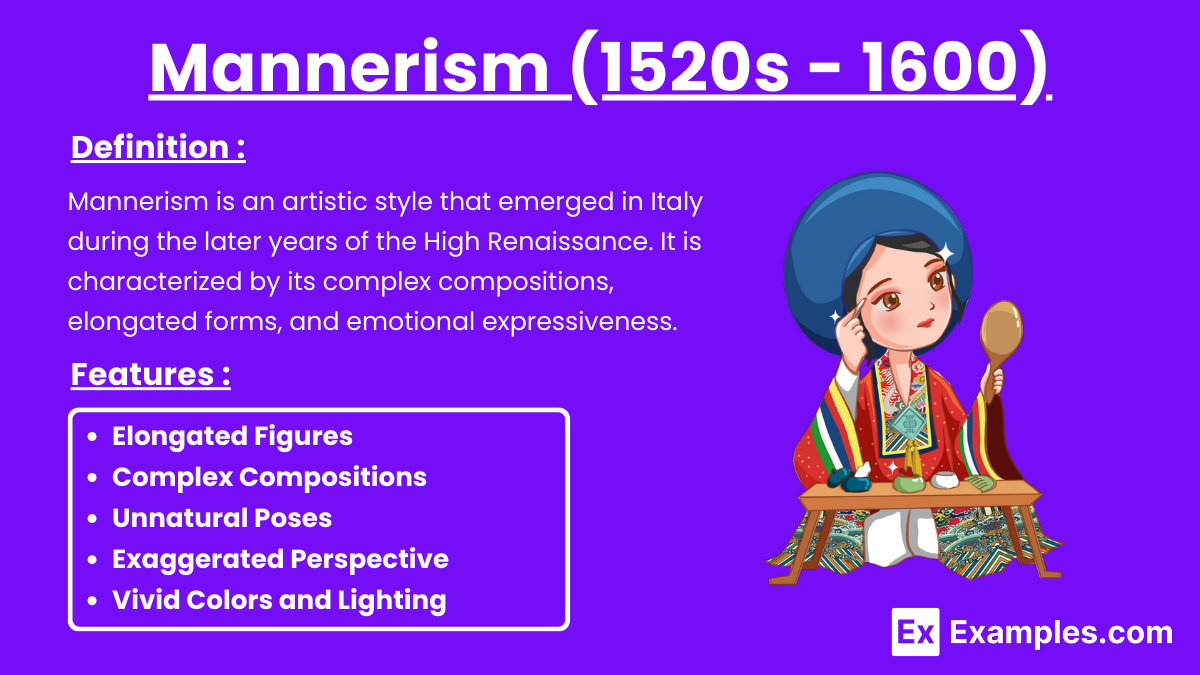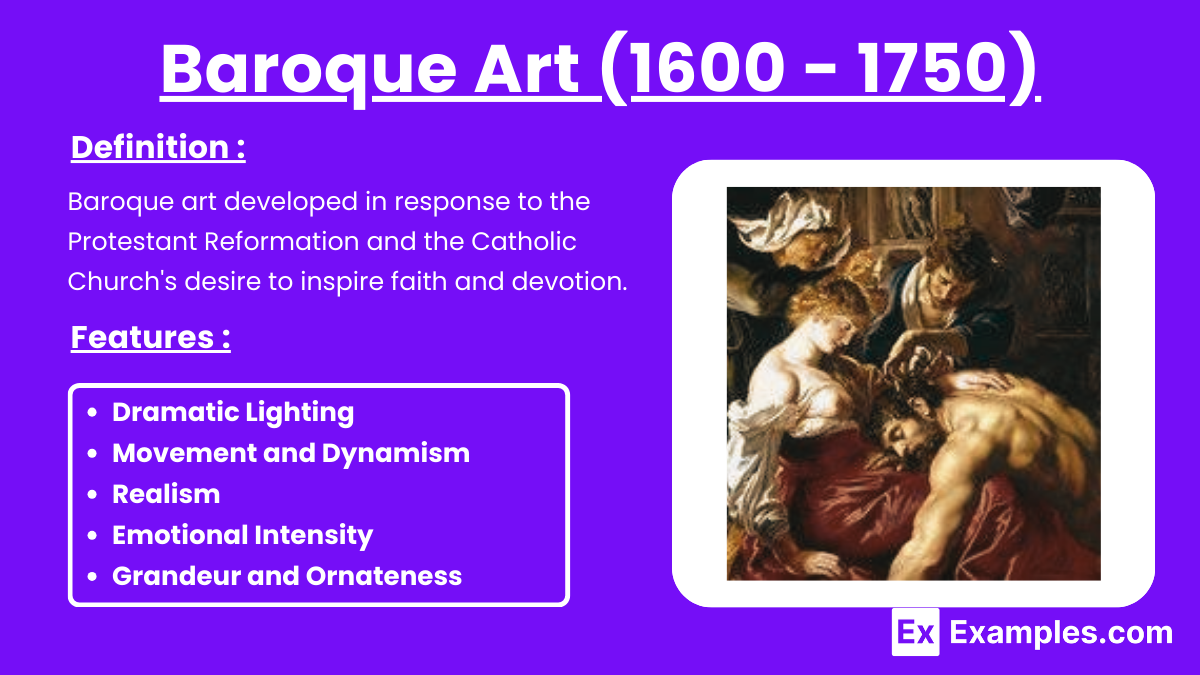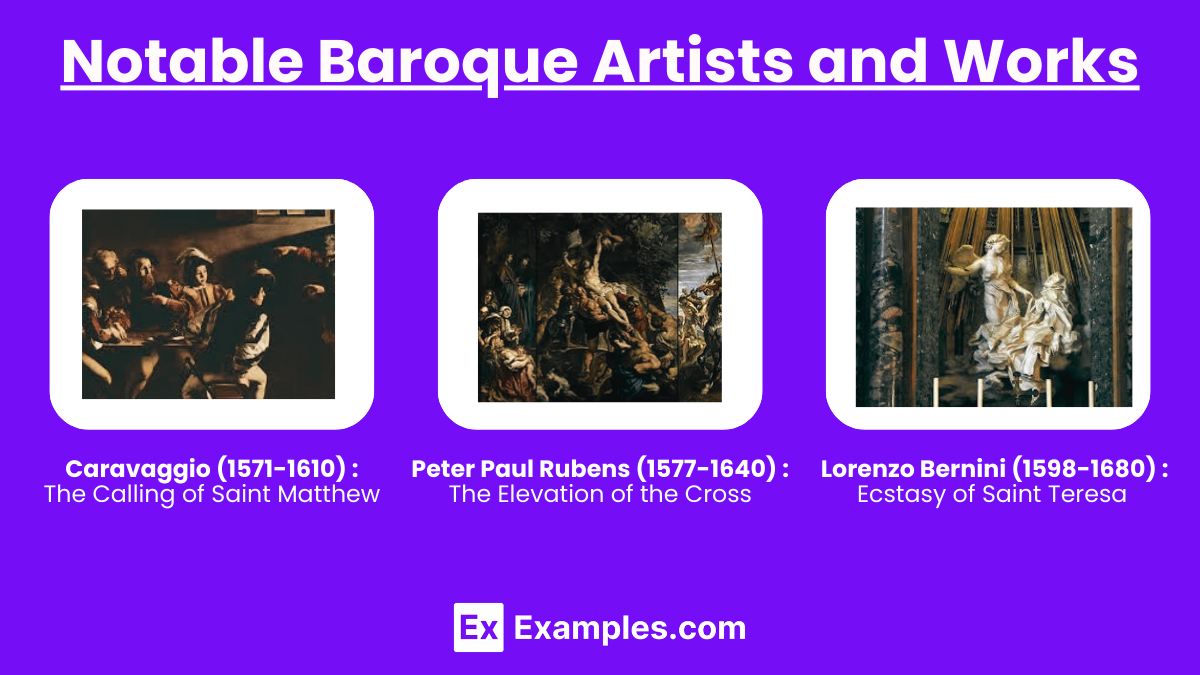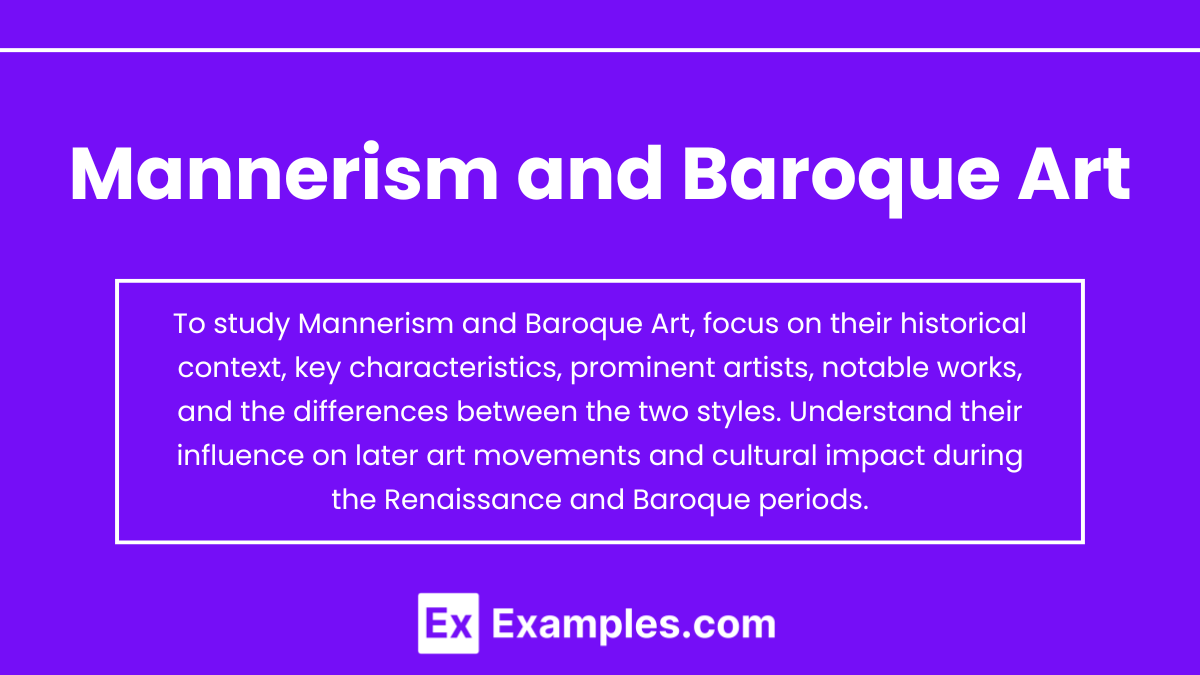Mannerism and Baroque art are two significant artistic movements in AP European history. Mannerism, emerging in the late Renaissance, is characterized by elongated figures and complex compositions, reflecting a sense of elegance and tension. Baroque art, following Mannerism, emphasizes grandeur, drama, and realism, often using dynamic movement and intense contrasts of light and shadow. Both styles were influenced by the cultural and religious upheavals of their times, including the Reformation and Counter-Reformation, making them vital in understanding the period's artistic and historical context.
Learning Objectives
Understanding the distinct characteristics and key artists of Mannerism and Baroque art, including their historical contexts and cultural significance. Learn how Mannerism's exaggerated forms and complex compositions contrast with Baroque's dramatic use of light, realism, and movement. Recognize the influence of the Reformation and Counter-Reformation on these styles, and the role of art in reflecting and shaping societal values and political power during these periods.
Mannerism (1520s - 1600)

Mannerism is an artistic style that emerged in Italy during the later years of the High Renaissance. It is characterized by its complex compositions, elongated forms, and emotional expressiveness. Mannerist artists often sought to evoke emotion rather than depict reality, resulting in exaggerated poses and proportions.
Key Features of Mannerism
Elongated Figures: Artists often depicted figures with elongated limbs and necks, creating a sense of grace and elegance.
Complex Compositions: Mannerist compositions are typically crowded with figures and intricate details, often lacking the clear focal point common in Renaissance art.
Unnatural Poses: Figures are frequently depicted in twisted or contorted poses, adding a dramatic and often unsettling quality.
Exaggerated Perspective: Mannerists used unusual perspectives and foreshortening to create a sense of instability or tension.
Vivid Colors and Lighting: The use of stark contrasts in lighting and vivid, sometimes unnatural colors is another hallmark of this style.
Notable Mannerist Artists and Works

The Mannerist period, emerging in the late Renaissance, is characterized by exaggerated proportions, complex compositions, and a heightened emotional intensity. Here, we explore three prominent artists of this era—Parmigianino, Jacopo Pontormo, and Agnolo Bronzino—and their significant contributions to Mannerist art.
Parmigianino: Parmigianino, born Girolamo Francesco Maria Mazzola in 1503, is best known for his painting "Madonna with the Long Neck" (1534-1540). This artwork exemplifies the Mannerist tendency towards elongated proportions and ambiguous spatial relationships. The Madonna is depicted with an unnaturally long neck and fingers, emphasizing a graceful, almost ethereal beauty. The composition includes a small, distant figure holding a scroll, which adds to the painting's enigmatic quality.
Jacopo Pontormo: Jacopo Pontormo, born in 1494, was a key figure in the transition from the Renaissance to Mannerism. His work "The Deposition from the Cross" (1525-1528) is a hallmark of the Mannerist style. The painting is noted for its vivid, pastel color palette and the emotional intensity conveyed through the figures' expressions and poses. Unlike traditional depictions of this biblical scene, Pontormo's composition lacks a clear focal point, with the figures arranged in a swirling, almost chaotic manner.
Agnolo Bronzino: Agnolo Bronzino, born in 1503, is renowned for his highly polished portraits that exemplify the Mannerist elegance and aloofness. One of his most famous works, "Portrait of a Young Man" (c. 1530s), demonstrates Bronzino's skill in capturing the refined, often enigmatic qualities of his subjects. The young man is portrayed with a cool, detached expression, characteristic of Bronzino's portraiture. The artist's meticulous attention to detail is evident in the richly textured clothing and the careful rendering of the sitter's features.
Baroque Art (1600 - 1750)

Baroque art developed in response to the Protestant Reformation and the Catholic Church's desire to inspire faith and devotion. This style is characterized by its dramatic use of light and shadow, dynamic compositions, and a focus on realism and emotional intensity.
Key Features of Baroque Art
Dramatic Lighting: The use of chiaroscuro (strong contrasts between light and dark) creates a dramatic effect, often highlighting the focal point of the artwork.
Movement and Dynamism: Baroque art often captures a moment in time, with figures caught in action, lending a sense of movement and energy.
Realism: Artists sought to depict their subjects with a high degree of realism, including intricate details and lifelike textures.
Emotional Intensity: Baroque works are known for their ability to evoke deep emotional responses from viewers, often through expressive faces and gestures.
Grandeur and Ornateness: Baroque architecture and art often include elaborate decoration, with a focus on grandeur and opulence.
Notable Baroque Artists and Works

Caravaggio: Known for his pioneering use of chiaroscuro and dramatic compositions, exemplified in works like "The Calling of Saint Matthew." Caravaggio revolutionized painting with his use of chiaroscuro and naturalistic depictions of biblical scenes, bringing a dramatic realism that contrasted with the idealized forms of the Renaissance.
Peter Paul Rubens: His paintings, such as "The Elevation of the Cross," are characterized by dynamic compositions and vibrant colors. Rubens was known for his vibrant color palette, dynamic compositions, and the sensuality of his figures. His works often depicted mythological and religious subjects with intense emotional expression.
Gian Lorenzo Bernini: A master sculptor and architect, Bernini's work in St. Peter's Basilica, including the "Ecstasy of Saint Teresa," showcases the emotional and theatrical aspects of Baroque art. Bernini was a master sculptor and architect whose works are noted for their lifelike realism, emotional intensity, and dynamic movement. His sculptures often convey dramatic moments frozen in time.
Comparison and Contrast
Purpose and Emotion: While Mannerism often focused on intellectual complexity and elegant distortion, Baroque art aimed to engage viewers emotionally, often inspiring awe or piety.
Composition and Style: Mannerism's complex, sometimes chaotic compositions contrast with Baroque's more structured yet dynamic arrangements.
Use of Light and Color: Both styles utilize dramatic lighting, but Baroque artists often employed chiaroscuro more extensively to heighten emotional impact.
Examples of Mannerism and Baroque Art
"Madonna with the Long Neck" by Parmigianino
Elongated figures and unusual proportions.
"The Descent from the Cross" by Jacopo Pontormo
Emotional expression and complex poses.
"Venus, Cupid, Folly and Time" by Bronzino
Intricate details and stylized figures.
"The Ecstasy of Saint Teresa" by Gian Lorenzo Bernini
Dramatic use of light and shadow; dynamic movement.
"The Night Watch" by Rembrandt van Rijn
Rich light and shadow; lively composition.
Practice Test Questions on Mannerism and Baroque Art
Question 1: Which of the following characteristics is commonly associated with Mannerism?
A) Balanced and symmetrical compositions
B) Use of intense emotion and dynamic movement
C) Elongated figures and exaggerated poses
D) Naturalistic and realistic representation
Answer: C) Elongated figures and exaggerated poses
Explanation: Mannerism is an art style that emerged in the late Renaissance, around the 16th century. It is known for its artificiality and complexity. Artists during this period often depicted figures with elongated proportions and exaggerated poses, departing from the balanced and harmonious compositions of the High Renaissance. This style emphasized elegance and the unusual over naturalism, often leading to distorted perspectives and ambiguous space.
Question 2: Which of the following best describes the main difference between Mannerism and Baroque art?
A) Baroque art is more restrained and simplistic compared to Mannerism.
B) Mannerism focuses on chaotic compositions, while Baroque art emphasizes clear and orderly layouts.
C) Mannerism often includes more emotional intensity and dramatic use of light than Baroque art.
D) Baroque art emphasizes grandeur, movement, and emotional intensity, while Mannerism is more about intellectual sophistication and artificiality.
Answer: D) Baroque art emphasizes grandeur, movement, and emotional intensity, while Mannerism is more about intellectual sophistication and artificiality.
Explanation: Baroque art, which followed Mannerism, developed in the early 17th century and is characterized by its grandeur, movement, and use of intense emotions. It often employed dramatic contrasts of light and shadow (chiaroscuro) to heighten the sense of drama and excitement. Mannerism, on the other hand, is often seen as more intellectually sophisticated, with an emphasis on artificiality, complex compositions, and an exploration of human emotions in a more subtle or ambiguous way.
Question 3: Which artist is considered a key figure in the transition from Mannerism to Baroque art?
A) Leonardo da Vinci
B) El Greco
C) Caravaggio
D) Michelangelo
Answer: C) Caravaggio
Explanation: Caravaggio is often considered a pivotal figure in the transition from Mannerism to Baroque art. He is known for his realistic approach to painting and dramatic use of lighting, which became hallmarks of the Baroque style. His works often depicted intense emotions and scenes from everyday life with a stark realism, contrasting with the more idealized and intellectual tendencies of Mannerism. Caravaggio's innovative use of chiaroscuro created a powerful sense of depth and volume, influencing many later Baroque artists.


